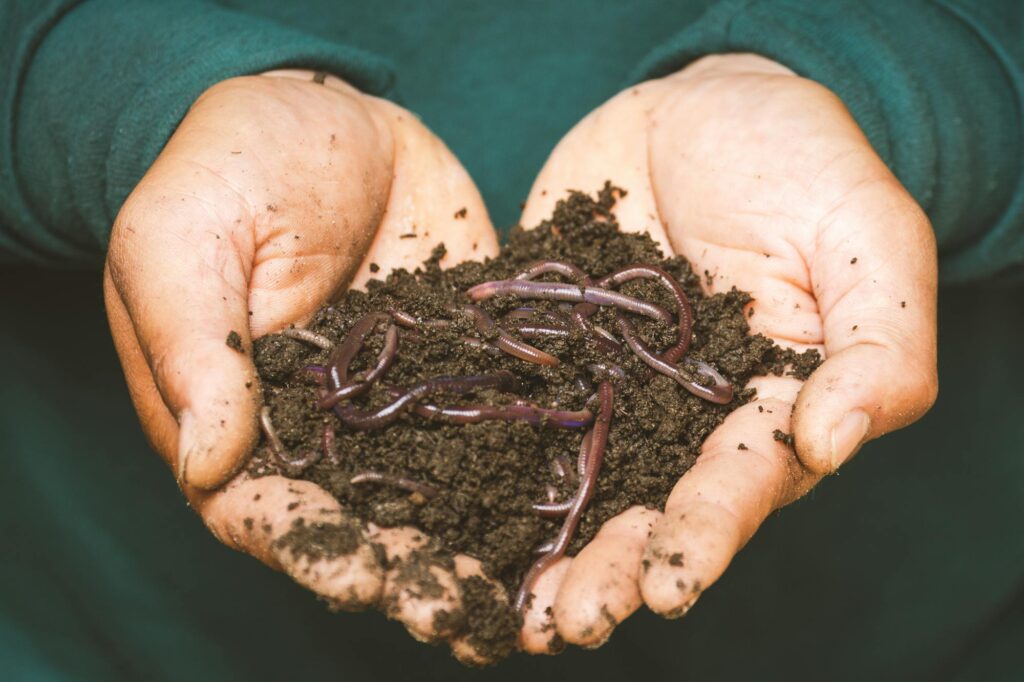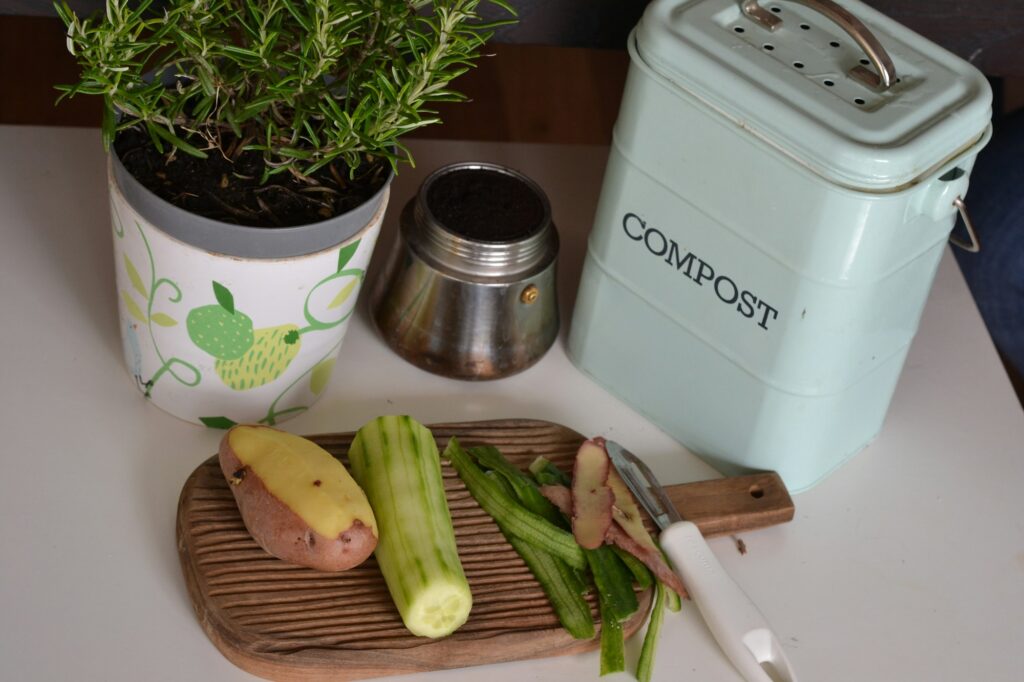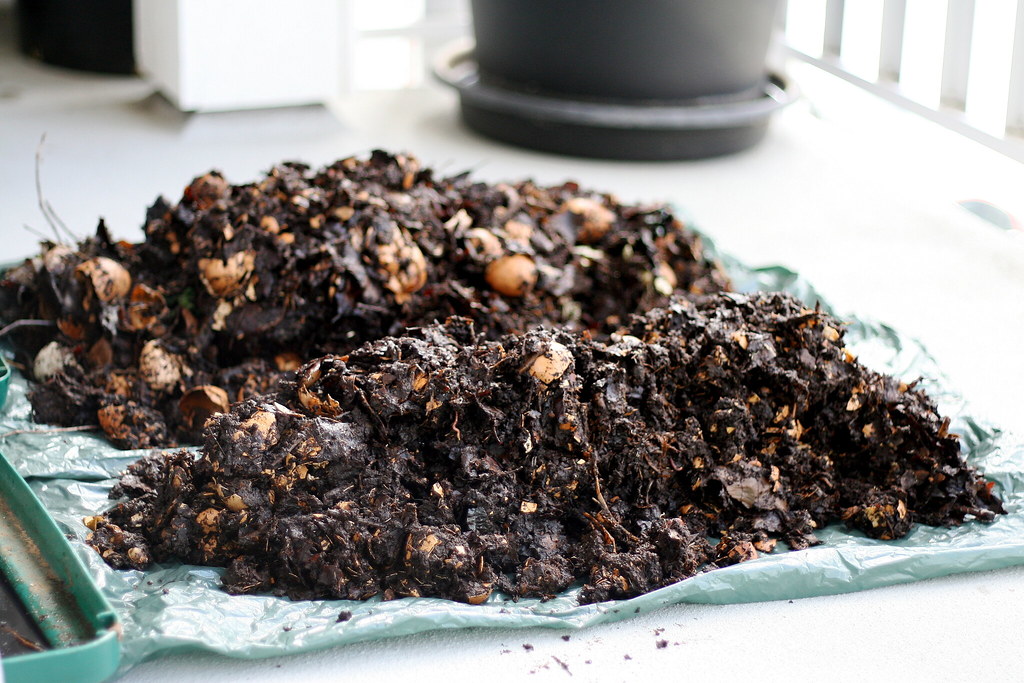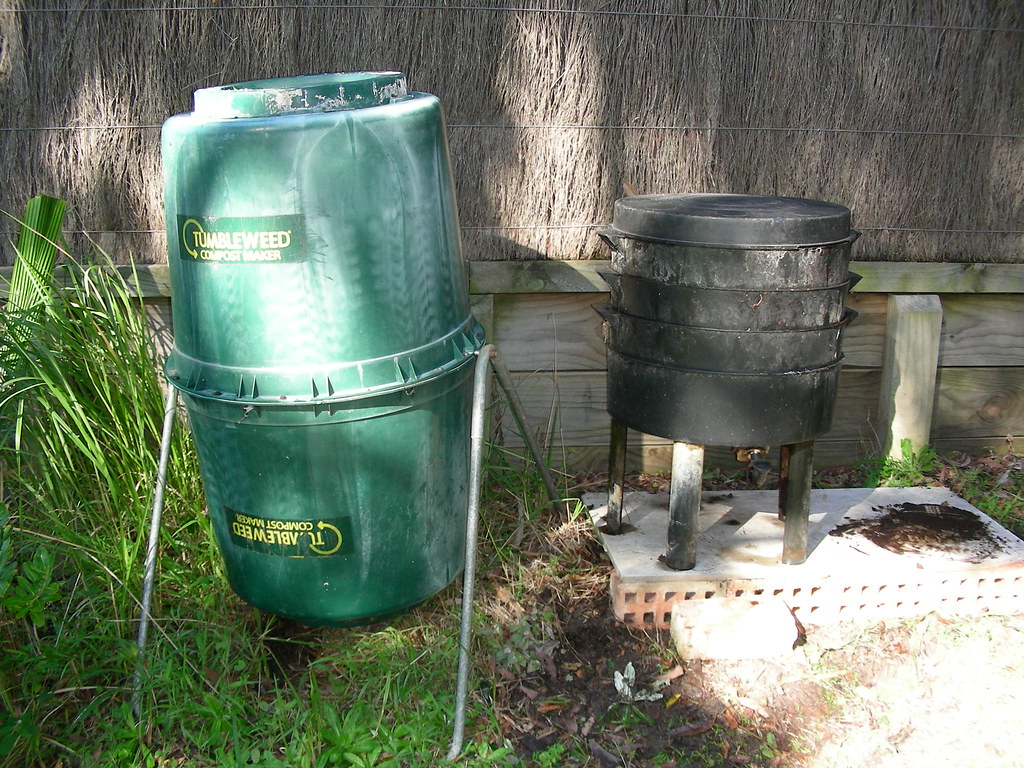Composting is a natural process that converts organic materials, such as kitchen scraps and yard waste, into nutrient-rich soil amendments beneficial for gardens and landscapes. This guide delves into the essentials of composting, explores various methods—including tumbler compost bins—and provides insights on utilizing compost effectively in your garden.
At its core, composting is the aerobic (oxygen-required) decomposition of organic matter by microorganisms. This process results in compost—a dark, crumbly, and earthy-smelling material resembling fertile garden soil. Composting enriches soil, enhances its structure, and supplies essential nutrients to plants.

What Is Compost Used For?
Compost is highly versatile and offers several uses in gardening and landscaping:
- Soil Amendment: Mix compost into garden beds to enrich soil with nutrients, enhance soil structure, and improve water retention.
- Mulch: Apply compost around the base of plants to suppress weeds, regulate soil temperature, and maintain moisture levels.
- Potting Mix Component: Blend compost with potting soil to boost nutrients and promote healthy plant growth in containers.
- Lawn Conditioning: Spread compost thinly over lawns to nourish grass, improve soil quality, and encourage lush growth.
Benefits of Composting
- Waste Reduction: Composting diverts organic waste from landfills, reducing methane emissions—a potent greenhouse gas—and contributing to environmental sustainability.
- Soil Enrichment: Incorporating compost into soil improves its structure, texture, and nutrient content, promoting healthy plant growth.
- Moisture Retention: Compost enhances soil’s ability to retain moisture, reducing the need for frequent watering and conserving water resources.
- Cost Savings: Producing your compost reduces reliance on commercial fertilizers and soil amendments, leading to financial savings.
What’s Needed for Composting to Work?
A successful composting process relies on balancing four key elements:
- Carbon (Browns): Carbon-rich materials provide microorganisms energy. These include dried leaves, straw, wood chips, and shredded paper.
- Nitrogen (Greens): Nitrogen-rich materials support the growth and reproduction of decomposer organisms. Examples are grass clippings, fruit and vegetable scraps, coffee grounds, and eggshells.
- Oxygen: Adequate airflow is crucial for aerobic decomposition. Regularly turning the compost pile introduces oxygen, preventing anaerobic conditions that can cause odors.
- Moisture: Compost should be moist but not waterlogged. The ideal moisture level resembles a wrung-out sponge, facilitating microbial activity without creating anaerobic conditions.

What Can and Cannot Be Composted
Compostable Materials (Greens and Browns):
Greens (Nitrogen-rich):
- Fruit and vegetable scraps
- Coffee grounds and filters
- Tea bags
- Grass clippings
- Fresh plant trimmings
Browns (Carbon-rich):
- Dried leaves
- Straw and hay
- Wood chips and sawdust
- Shredded newspaper and cardboard
- Small branches and twigs
Non-Compostable Materials:
- Meat, fish, and poultry
- Dairy products
- Fats, grease, and oils
- Bones
- Diseased plants
- Weeds with seeds
- Chemically treated wood products
- Pet waste from carnivorous animals
- Synthetic materials, such as plastics and textiles
Avoiding non-compostable items ensures a healthy composting process and prevents attracting pests or introducing pathogens.

Composting Methods
Several composting methods cater to different needs, spaces, and preferences:
Traditional Composting
This method involves creating a compost pile or using a stationary bin. Organic materials are added in layers, and the pile is turned periodically to maintain aeration and expedite decomposition.
Vermicomposting
Vermicomposting uses red wiggler worms to break down organic matter in a controlled environment, such as a worm bin. This method is ideal for limited spaces and produces nutrient-rich worm castings.
Trench Composting
Organic materials are buried directly into garden soil, decomposing over time. This low-maintenance method enriches soil without the need for a designated compost area.
Compost Tumblers
Compost tumblers are enclosed bins designed to simplify the composting process. They facilitate easy turning, maintain heat, and deter pests, making them suitable for urban or suburban settings.

Two separate chambers allow one side to finish composting while leaving the other to add fresh waste.
How to Use a Tumbler Compost Bin
Tumbler compost bins offer a convenient and efficient way to compost, especially for beginners. Here’s how to use one effectively:
- Placement: Place the tumbler in a sunny location to enhance heat buildup, accelerating decomposition. Ensure it’s on a flat surface for stability.
- Loading the Tumbler: Balance greens and browns. Aim for approximately two parts: brown (carbon-rich materials such as dry leaves or shredded newspaper) and green (nitrogen-rich materials like kitchen scraps or grass clippings). This balance ensures efficient decomposition and reduces odor issues.
- Regular Turning: Turn the tumbler every few days to mix materials, introduce oxygen, and evenly distribute moisture. Regular turning significantly accelerates the composting process by maintaining optimal aerobic conditions.
- Moisture Control: Check moisture levels periodically. The compost should feel damp but not soggy. If it is too dry, sprinkle in some water. Add dry, carbon-rich materials like shredded newspaper or dry leaves if it is too wet.
- Harvesting Compost: Depending on conditions, compost can be ready within a few weeks to a few months. Finished compost is dark, crumbly, and has an earthy scent. Remove the compost through the designated access door and leave more extensive, undecomposed materials in the tumbler to continue composting.
See further down our guide for some troubleshooting tips if you’re having issues.

How Do You Use Compost in a Garden?
Incorporating compost into your garden is straightforward:
- Preparing Garden Beds: Mix a 2-4 inch compost into the top 6-8 inches of garden soil before planting. This creates a nutrient-rich environment for plants.
- Side Dressing: During the growing season, add compost around the base of existing plants to provide ongoing nutrition and moisture conservation.
- Compost Tea: Steep compost in water to create nutrient-rich compost tea. This liquid fertilizer provides quick nutrient absorption and can water plants.
- Annual Application: Apply compost annually, ideally in spring or fall, to continuously enhance soil fertility and structure.
Advanced Composting Tips
Enhance your composting effectiveness with these advanced tips:
- Layering: Alternate layers of green and brown materials to ensure a balanced nutrient mix and efficient decomposition.
- Temperature Management: Regular turning helps maintain heat. Optimal composting temperatures range from 130°F to 160°F, which speed up decomposition and eliminate pathogens and weed seeds.
- Seasonal Adjustments: In colder climates, insulate your compost with straw or leaves to maintain internal warmth. Conversely, during hot, dry seasons, monitor moisture levels more frequently.
Troubleshooting Common Composting Issues
Address these common composting challenges effectively:
- My compost has an unpleasant odor. This is usually due to excess moisture or a lack of oxygen. Turn the compost more frequently and add carbon-rich materials. Also, ensure your compost has adequate airflow by checking for compacted materials and loosening them to improve aeration.
- My compost is decomposing too slowly. This may result from large material sizes, insufficient nitrogen, low temperatures, or inadequate moisture. Chop materials into smaller pieces and balance your mix with additional green materials. Regularly turn your compost to ensure an even distribution of heat and humidity, and consider insulating your compost bin in colder weather to maintain decomposition rates.
- My compost is infested with pests. To keep pests away, avoid non-compostable items like meat, dairy, and fats. Use secure compost bins or tumblers to minimize access. Additionally, bury food scraps deeply within the pile to deter pests, and consider covering your compost with a layer of brown materials like leaves or shredded paper.
- My compost is too wet. Too wet compost can become anaerobic, leading to odor issues and slow decomposition. Balance moisture by adding dry, carbon-rich materials such as shredded paper, cardboard, or straw.
- My compost is too dry. Too dry compost will slow down or halt the decomposition process. Regularly monitor moisture levels, and if needed, add water evenly to keep the compost damp like a wrung-out sponge.
- There are flies or insects in my compost. Small flies or insects can indicate exposed food waste. Regularly cover fresh food scraps with a layer of brown materials or composted soil to prevent attracting these pests.
- Things are growing in my compost. If compost doesn’t reach sufficient temperatures (130°F to 160°F), weed seeds and pathogens may survive. Regularly turn your compost to maintain high temperatures and ensure effective pathogen and seed kill-off.
- My compost has mold growth. Some mold is typical, but excessive mold growth could indicate a moisture imbalance or insufficient aeration. To mitigate excessive mold, adjust moisture levels and increase the frequency of turning the compost pile.
Start Composting Today!
Composting is an accessible and rewarding practice that converts household waste into valuable garden resources. By understanding the composting process, utilizing practical methods like tumbler compost bins, and effectively applying compost in your garden, you contribute significantly to environmental sustainability and enjoy healthier, more productive gardening. Start composting today to reap the benefits of this natural recycling method!





